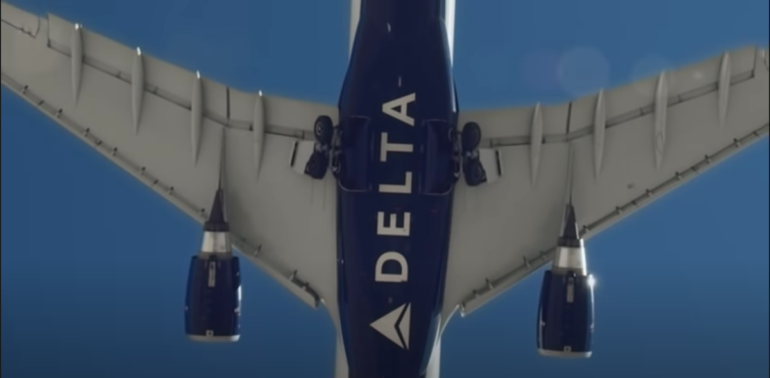And inside, they’re blissfully quiet.
Screenshot by ZDNet
You may not have flown for the last year.
You may be dreaming about it more than is reasonable, even if the experience might not be as enjoyable for a while yet.
But whether you’re flying for business or something pleasant, you want your technology to function freely and smoothly inside the plane.
You might, then, be positively entertained by an announcement made by Delta Air Lines this week. Of course, it had a slightly businesslike title: “Accelerating the future of in-flight connectivity at Delta.”
At heart, however, there are a couple of elements that may uplift every single traveler. Well, every human traveler.
Delta announced a partnership with satellite Wi-Fi provider Viasat. This has the powerful advantage of owning the equipment and the satellite network that goes into its Wi-Fi offering.
Delta’s managing director of inflight entertainment and Wi-Fi Glenn Latta put it like this: “Viasat’s high-speed satellite-powered technology changes the game for what we can offer.”
I have more than one memory of paying $40 to use Gogo inflight and discovering there were considerable stop-stoppy elements, yet some say it’s improved greatly.
In itself, this represents something of a catching up for Delta, as American Airlines, JetBlue, and others have used Viasat for some time. In some, in not all, of their planes.
But there’s another aspect to this decision.
Latta explained: “We now have the additional capability and next-gen technology to make sure you have a faster and more consistent connection to your favorite sites, including the ability to stream the entertainment of your choice on your flight. It also lays the groundwork for future enhancements and personalization with the seatback screen that customers will love.”
Let’s talk about those seatback screens, a technology from a seemingly bygone era.
American Airlines has spent the last couple of years tearing seatback screens out of its domestic aircraft. The airline’s belief is that everyone should and will bring their own devices and choose those for streamed entertainment.
Which may dismay some families that have chosen to have multiple children. It may also dismay those business types who are adept at typing a few things on their laptops, while simultaneously watching a profound drama on a seatback screen.
At the same time as American has been taking out its screens, Delta has actually been adding more.
Which brings me to the second part of Delta’s announcement. The company reiterated its belief that Wi-Fi on flights should be free. It explained that the Viasat deal was “a significant step on that journey.”
If you ultimately have free, efficient Wi-Fi you can — as Delta does — provide tablets as seatback screens and stream personalized video to them. Passengers end up oddly pleased.
Forcing the passenger to rely on their own device — and perhaps still pay for the Wi-Fi — doesn’t seem like the most customer-focused thing you can do.
For now, Delta does still charge for Wi-Fi but insists that this Viasat decision offers a window into a free Wi-Fi future. Delta tested free Wi-Fi in 2019 and discovered that it can be difficult to provide the bandwidth required. Viasat’s next iteration of satellite Wi-Fi — Viasat-3 — promises to house eight-times more capacity.
Who wouldn’t like seatback screens and fast, free Wi-Fi as a standard offering?
Of course, there are still questions. As The Points Guy explained, it’s unclear whether Delta’s current free Wi-Fi offering with T-Mobile will continue on Viasat-enabled planes. Moreover, it’s not as if every single Delta plane will instantly be equipped with Viasat. Around 300, that’s half of Delta’s fleet, are scheduled for makeovers.
It’s still a heartening statement of intent.
The strategic decisions airlines make with respect to technology carry with them years of implications. It’s hard not to conclude that American thinks first about profit-maximization and cost-cutting rather than passenger-pleasing.
For example, the airline’s instinct has always been not to offer free Wi-Fi, while admitting competitive pressures may cause it to go along with Delta.
Moreover, American’s Boeing 737 Max, now safely back in service in the US, has more seats crammed into it than, say, Southwest’s version of the same plane. It’s as if the airline wants to (try to) do the minimum for customers and gain the maximum revenue despite that.
Taking out seatback screens might save a little on fuel and aircraft maintenance, but it does little for making the customer feel good on your plane and want to tell other people about it.
As air travel (hopefully) begins to make a fully healthy return in the second half of 2021, every single tech-related element of the inflight experience will make a difference.
I wonder whether those who are forced to bring their own devices will be happier.



